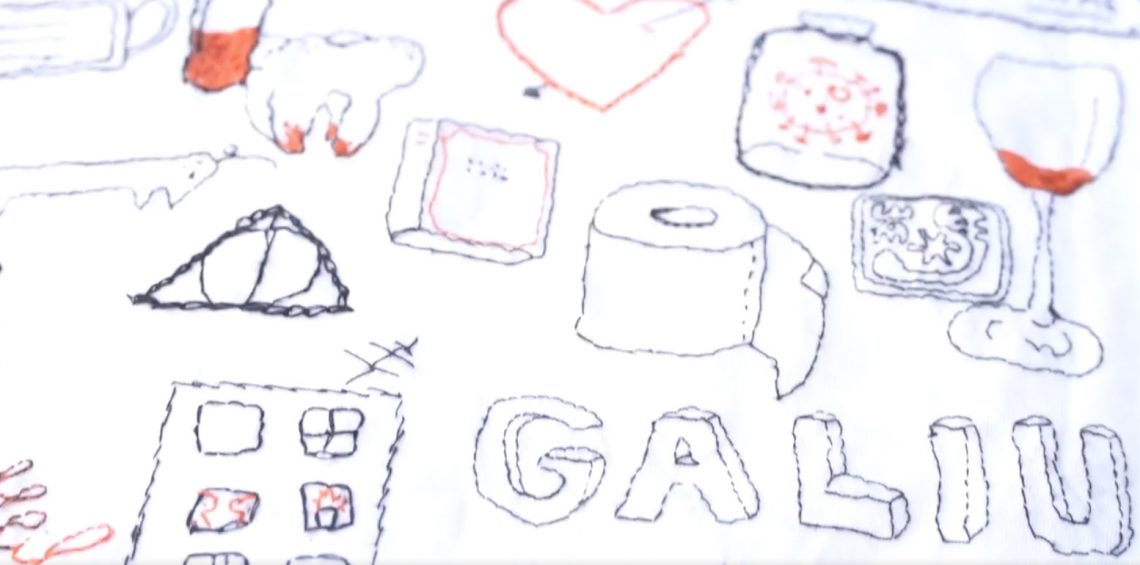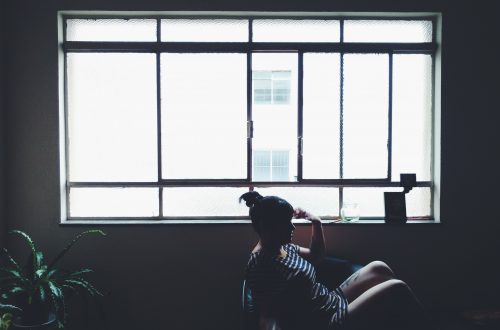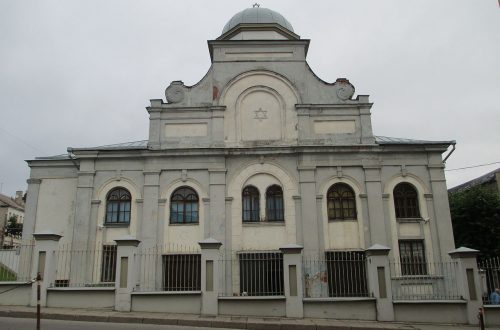
The museum invites to document the history of COVID-19 together (Vilnius, Lithuania)
Life because of the COVID-19 pandemic has changed a lot around the world. This period will surely go down in history. Therefore, the National Museum of Lithuania invited people to contribute to the reflection of this period in history and to share items that may become museum exhibits in the future. That could be anything: diaries with the described experiences and reflections of pandemic time, things that people do not imagine everyday life during quarantine, e.g., books, drawings, games diversifying limited leisure time, even original masks, etc. Tangible material was especially valuable to the museum but virtual material such as digital photos, videos were also welcome.
Background
The National Museum of Lithuania established in 1952 is one of the biggest and oldest historical heritage museums in Lithuania. The origins of the museum date back to 1855, when the Vilnius Antiquities Museum was established, later it was reorganized several times because of historical events. The museum was renamed under its current name in 1992. Today the National Museum of Lithuania preserves the largest number of exhibits in the country – more than 1 500 000 million, and unites eleven departments (the majority of them are located in Vilnius). According to the director of the museum, “Each of the departments is unique in its own way, but also very important in the context of Lithuanian history and culture.” One of the well-known and most frequently visited is Gediminas Castle Tower. Besides, the museum has a library, archive and restoration center.
The museum is a state budget institution under the Ministry of Culture of the Republic of Lithuania. Most of the museum’s projects are co-funded by the Lithuanian Council for Culture, some by various EU funds. The museum and its departments offer inclusive exhibitions, events, and valuable expositions, annually organize ethnographic, historical, and archeological expeditions, conferences, and implement educational activities. The museum allows visitors to get acquainted with the most important phenomena and events in the history of Lithuania which determined the development of society and formed the identity of nowadays Lithuania. In its daily activities, the museum not only works with the historical exhibits but also tries “to preserve today” for the future. Initiative to archive the COVID-19 pandemic history could be one of these days’ preservation examples. The museum aims to make future initiatives attractive not only to an already loyal audience but also to others who have visited it a long time ago or will be entering it for the first time.
Description
In April of 2020 the National Museum of Lithuania announced the invitation to the public to document the history of COVID-19 pandemic together. People were invited to share things, photos, experiences or impressions that would best illustrate this period. The aim was to collect both physically tangible (items, drawings, letters, etc.) and virtual material (photos, videos, records, etc.). People were asked to fill in the special form and send it to the museum by a specified e-mail. If there was a need to upload a virtual and/or large size material, people had to use document-sharing sites. In order to transfer an item, a photo of it had to be attached along with the completed form, and the museum contacted people to take over the item. The material presented to the museum had to be clearly related to the global situation of the COVID-19 virus.
People had not only to describe the provided material but also answer how this material reflects their current life during the coronavirus pandemic. Topics of the material varied from work, leisure, learning to creative initiatives, documents, even jokes, etc. People submitting material had to ensure that they are the authors and that they are responsible for not infringing the copyrights of others. Also, by sharing the material people agreed that it will be stored in the National Museum of Lithuania and will be used for usual museum activities as exhibitions, publishing, education or other and that it will be used in the public space (website, Facebook, etc.) or published in various forms of its reproduction (digital image, postcard, press, etc.). These rights were transferred to the museum free of charge.
Among the most interesting exhibits was a t-shirt received from one girl with thirty embroidered words or phenomena that people associate with quarantine; specially designed wedding face masks; an angel sculpture made of the dental filling material because dental services could not be provided but the materials had to be consumed. And that is only a few examples. Not only artistic things were received, but also objects that reflected the real and quickly changing situation such as travel posts from Asia, blog posts from Italy. These were sent by people who traveled during the quarantine in different countries and recorded daily blogs about the changing situation. Need to mention that at the beginning when the invitation to contribute to the COVID-19 history documentation was announced, the museum considered if people will respond to the invitation, what material will be collected, etc. But as we already know, the results were surprising and maybe even exceeded the expectations.
Some examples can be seen in these videos:
- T-shirt with 30 embroidered words or phenomena that people associate with quarantine.
- A board warning of the danger of a coronavirus in a children’s playground.
- More examples (in Lithuanian).
Impact
The initiative received a response from the society. Within one year, from April 2020, over 130 exhibits reached the National Museum of Lithuania. Not only individuals but also state institutions and organizations, private companies responded to the museum’s invitation. The most interesting exhibits have already been presented, and a larger exhibition is planned for the future. People didn’t stop to share things therefore it was decided to continue the initiative. This initiative has allowed anyone to contribute documenting the history of COVID-19 because there were no special requirements for those wishing to participate other than to provide exhibits complying with the idea of the initiative. People were able to show their creativity by choosing and providing items, photos, videos, experiences, impressions and/or more that they thought would best illustrate the situation related to the pandemic. It is not common practice for the museum to openly invite everyone to share a material.
This time, the museum has gone beyond its usual boundaries by inviting people to contribute to creating the future exhibition. In a sense, in this way, people were able to get closer to the museum, its functions and the processes going on inside, become a part of these processes and better understand them. Director of the museum states that the public involvement is considered to be their greatest success during this year. Things provided by people and organizations will have lasting value in the future. The discoveries made by the Lithuanian National Museum, which decided to document the history of COVID-19, already allow us to predict what stories and Lithuanian experiences during the global pandemic would be told many years from now. Whether all provided material becomes an exhibit, will be possible to see after many years, because the whole process requires time.
According to the museum’s director, “Not every object becomes an exhibit, just as not every event becomes historical – this can only be said after a certain time, seeing the perspective, assessing how the events unfolded, what changes they brought. When evaluating an object, its historical value, uniqueness, and rarity must be assessed. We will not say that today, it will take at least a few decades.” However, the National Museum of Lithuania has provided photos and descriptions of several exhibits collected in the country to the House of European History in Brussels, which has begun to systematize the testimonies and experiences of the people of the European Union during the pandemic (for more information: https://historia-europa.ep.eu/en/covid-makes-history). These examples allow to connect, confront, and compare experiences with a continent-wide audience. Who knows, maybe after many years, the material about the COVID-19 period collected by the museums will become the research subject by specialists and scientists in various fields.
Interpretation
“This invitation of the museum is an opportunity not only to leave a mark on history but also to see how it imprints there” – states the director of National Museum of Lithuania. The results will be seen in the distant future. However, even today from the provided material we can understand that not only tangible and not necessarily visible things reflect the pandemic period. There was much more than that and even more to think about. Various examples reflecting the pandemic period prove us that relations, experiences, impressions are not less important and significant. We may have only forgotten about it for a while.
References
- Official website of the National Museum of Lithuania, “Apie muziejų”, https://lnm.lt/apie-muzieju/ (accessed November 17, 2021).
- Official website of the National Museum of Lithuania, “Metai gyvenimo su karantinu: ką pasakoja muziejų pasiekę eksponatai?” (April 26, 2021), https://lnm.lt/aktualijos/metai-gyvenimo-su-karantinu-ka-pasakoja-muzieju-pasieke-eksponatai/. (accessed November 17, 2021).
- Official website of the National Museum of Lithuania, “Muziejus kviečia kartu dokumentuoti COVID-19 istoriją” (April 20, 2021), https://lnm.lt/aktualijos/muziejus-kviecia-kartu-dokumentuoti-covid-19-istorija/. (accessed November 17, 2021).
- Online journal “Neakivaizdinis Vilnius”, “Lietuvos nacionalinis muziejus kviečia dalintis daiktais, kurie po daugelio metų pasakos” COVID-19 istoriją (April 20, 2021), https://neakivaizdinisvilnius.lt/straipsniai/lietuvos-nacionalinis-muziejus-kviecia-dalintis-daiktais-kurie-po-daugelio-metu-pasakos-covid-19-istorija/. (accessed November 17, 2021).
- National newspaper of Lithuanian history “Voruta”, “Lietuvos nacionalinis muziejus kviečia dalintis daiktais, kurie po daugelio metų pasakos COVID-19 istoriją” (May 21, 2020), http://www.voruta.lt/lietuvos-nacionalinis-muziejus-kviecia-dalintis-daiktais-kurie-po-daugelio-metu-pasakos-covid-19-istorija/. (accessed November 17, 2021).
Author
- Plungé Public Library (Lithuania)
Header photograph
Photo



